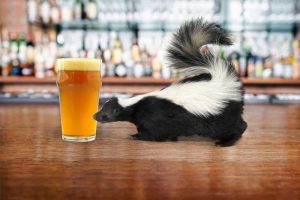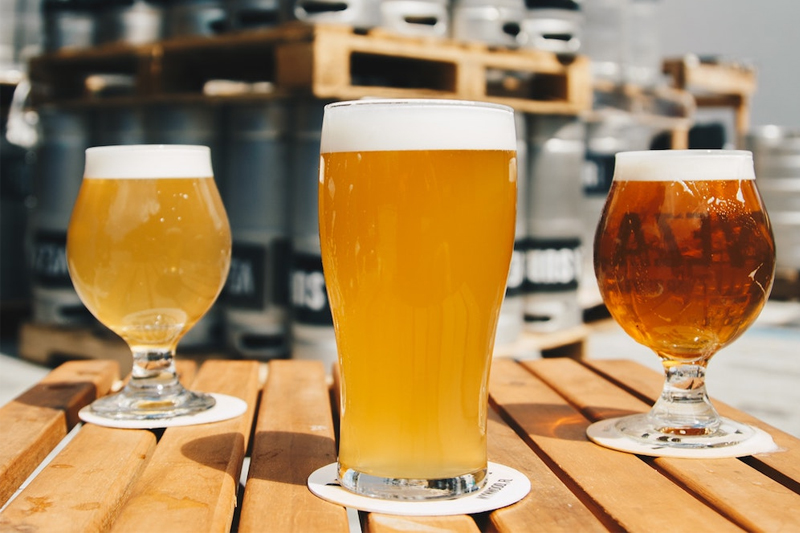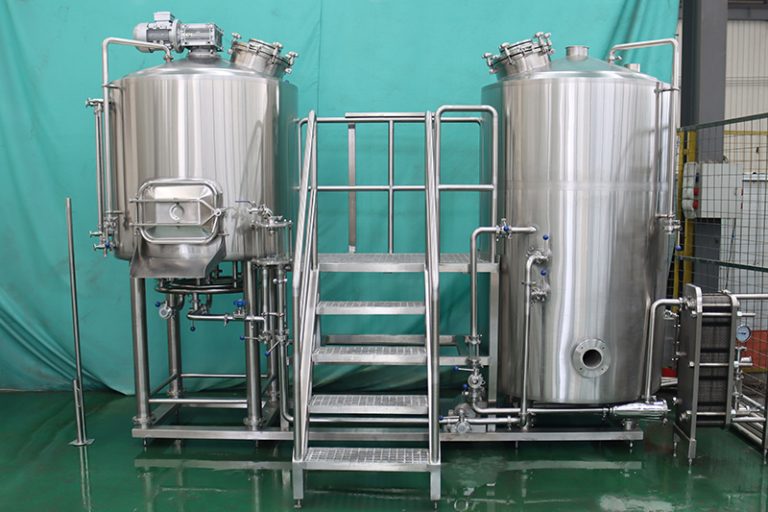
Guide to beer off-flavors: Light-struck
The most common odor in commercial beer and craft beer is the smelly “Light-struck” flavor and aroma. It can make your beer emit a strong smell (it feels like a skunk) and make it unpleasant to drink. Guide to beer off-flavors: Light-struck What is Light-struck? When light hits the beer, the ultraviolet rays interact with

Guide to beer off-flavors: Acetic acid
No matter how many times you have brewed beer in the past when you open the first bottle of a new batch, it is always exciting. Maybe the aroma of hops will be as good as expected, maybe the beer will be muddy, or the beer will taste like vinegar. Beer that tastes like vinegar

Guide to beer off-flavors: Phenolics
Beer always contains some form of phenols (phenols and polyphenols, etc.), such as tannins (directly derived from hops and malt). Although low levels of polyphenols can increase the taste of beer, high levels of polyphenols can cause dryness and astringency. When beer glasses are described as phenols, they usually refer to volatile phenols. Volatile phenols

Guide to beer off-flavors: Metallic
It is not normal for Metallic to appear in any flavored beer. If you can taste Metallic or bloody taste in beer, it is recommended not to drink this beer. Under normal circumstances, the source of iron ions is only a very small amount of iron-containing protein in grains, which will enter the beer during

Guide to beer off-flavors: Alcoholic
Some craft beer will produce excessive alcohol taste and aroma. This can vary from a slight alcoholic warmth to strong alcohol that tastes like moonshine. Next, Micet Craft will explore the root cause of the alcoholic odor. In addition, this is also the eighth article about beer’s peculiar smell. If you are interested, you can

Guide to beer off-flavors: hydrogen sulfide
The presence of hydrogen sulfide (H2S) in beer will give the beer a unique smell of rotten eggs. In some beer styles, a small amount of hydrogen sulfide will form a unique flavor in the beer. But, if beer contains more hydrogen sulfide, the beer may produce a pungent rotten egg flavor, which is not

Guide to beer off-flavors: acetaldehyde
The peculiar smell in beer has always been a headache for brewers, although some peculiar smells are characteristic in some beer styles. But acetaldehyde is a special taste, because it may cause you to have a hangover, which is very detrimental to your health. Next, Micet Craft will introduce you to acetaldehyde-related content, so that

Guide to beer off-flavors: DMS
One of the most frequently mentioned odors in beer evaluation is dimethyl sulfide (DMS). DMS is a sulfur compound that is generally thought to give beer creamed corn or cooked vegetable characteristics. Most beer brewers know very well how to reduce the risk of DMS entering the beer, such as checking the boiling time and

Guide to beer off-flavors: infection
Is my beer infected? This is a question we often receive. Next, Micet Craft will introduce the content of beer infection. This is also the fourth article in our beer off-flavors series. If you are interested, you can read other articles related to odor. We hope to help you better complete beer brewing. Guide to beer

Guide to beer off-flavors: papery (oxidized)
Both commercial brewers and homebrewers are doing their best to reduce the oxygen content in the finished beer. The oxygen in the finished beer will destroy the long-term stability of the beer’s flavor and clarity, as well as cause peculiar smells. The oxidized beer will show a paper peculiar smell or even a sweet stone

Guide to beer off-flavors: Light-struck
The most common odor in commercial beer and craft beer is the smelly “Light-struck” flavor and aroma. It can make your beer emit a strong smell (it feels like a skunk) and make it unpleasant to drink. Guide to beer off-flavors: Light-struck What is Light-struck? When light hits the beer, the ultraviolet rays interact with

Guide to beer off-flavors: Acetic acid
No matter how many times you have brewed beer in the past when you open the first bottle of a new batch, it is always exciting. Maybe the aroma of hops will be as good as expected, maybe the beer will be muddy, or the beer will taste like vinegar. Beer that tastes like vinegar

Guide to beer off-flavors: Phenolics
Beer always contains some form of phenols (phenols and polyphenols, etc.), such as tannins (directly derived from hops and malt). Although low levels of polyphenols can increase the taste of beer, high levels of polyphenols can cause dryness and astringency. When beer glasses are described as phenols, they usually refer to volatile phenols. Volatile phenols

Guide to beer off-flavors: Metallic
It is not normal for Metallic to appear in any flavored beer. If you can taste Metallic or bloody taste in beer, it is recommended not to drink this beer. Under normal circumstances, the source of iron ions is only a very small amount of iron-containing protein in grains, which will enter the beer during

Guide to beer off-flavors: Alcoholic
Some craft beer will produce excessive alcohol taste and aroma. This can vary from a slight alcoholic warmth to strong alcohol that tastes like moonshine. Next, Micet Craft will explore the root cause of the alcoholic odor. In addition, this is also the eighth article about beer’s peculiar smell. If you are interested, you can

Guide to beer off-flavors: hydrogen sulfide
The presence of hydrogen sulfide (H2S) in beer will give the beer a unique smell of rotten eggs. In some beer styles, a small amount of hydrogen sulfide will form a unique flavor in the beer. But, if beer contains more hydrogen sulfide, the beer may produce a pungent rotten egg flavor, which is not

Guide to beer off-flavors: acetaldehyde
The peculiar smell in beer has always been a headache for brewers, although some peculiar smells are characteristic in some beer styles. But acetaldehyde is a special taste, because it may cause you to have a hangover, which is very detrimental to your health. Next, Micet Craft will introduce you to acetaldehyde-related content, so that

Guide to beer off-flavors: DMS
One of the most frequently mentioned odors in beer evaluation is dimethyl sulfide (DMS). DMS is a sulfur compound that is generally thought to give beer creamed corn or cooked vegetable characteristics. Most beer brewers know very well how to reduce the risk of DMS entering the beer, such as checking the boiling time and

Guide to beer off-flavors: infection
Is my beer infected? This is a question we often receive. Next, Micet Craft will introduce the content of beer infection. This is also the fourth article in our beer off-flavors series. If you are interested, you can read other articles related to odor. We hope to help you better complete beer brewing. Guide to beer

Guide to beer off-flavors: papery (oxidized)
Both commercial brewers and homebrewers are doing their best to reduce the oxygen content in the finished beer. The oxygen in the finished beer will destroy the long-term stability of the beer’s flavor and clarity, as well as cause peculiar smells. The oxidized beer will show a paper peculiar smell or even a sweet stone
So how is isoamyl acetate produced?

How to increase the production of esters in beer?
How to reduce the production of esters in beer?
- Fully ventilate
- Select yeast strains with low-fat formation potential
- Pitch many viable/vital yeast cells
- Pitching and fermentation at the ideal temperature


